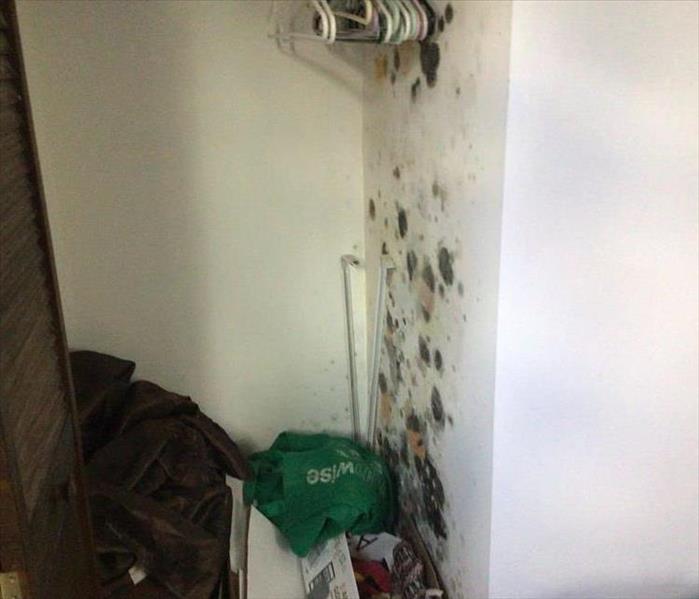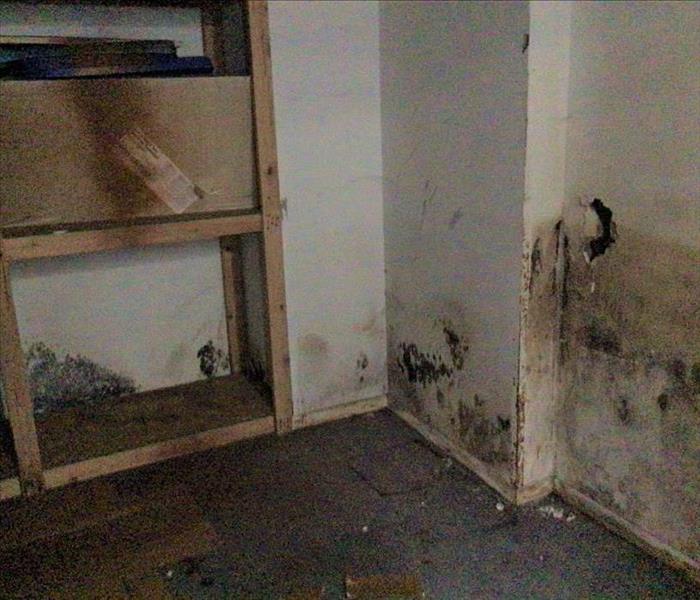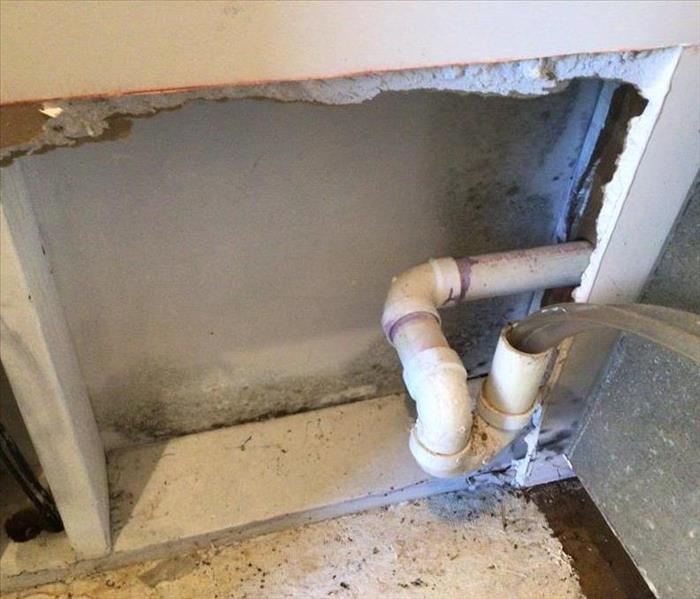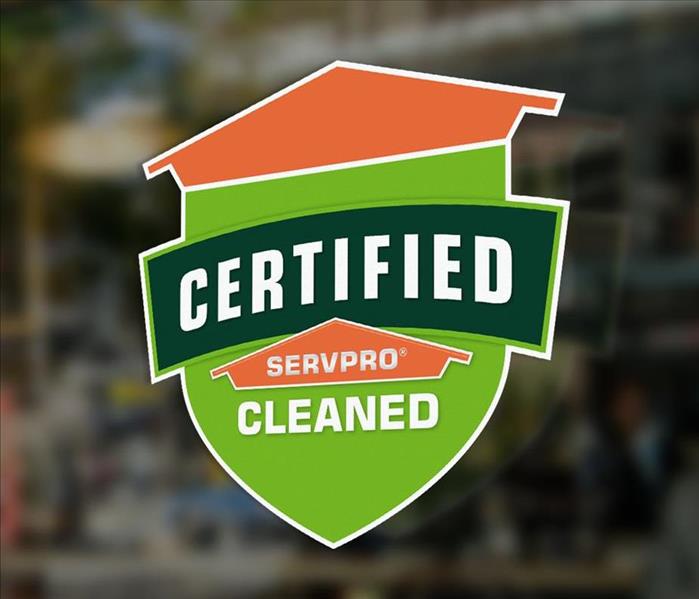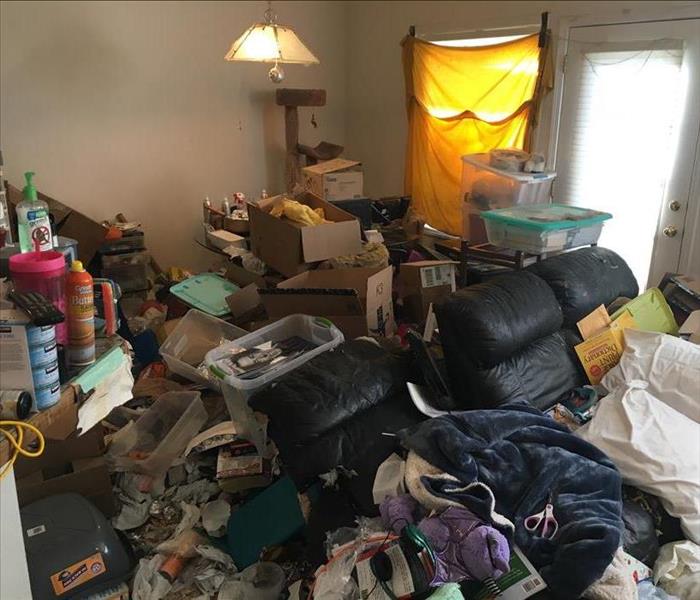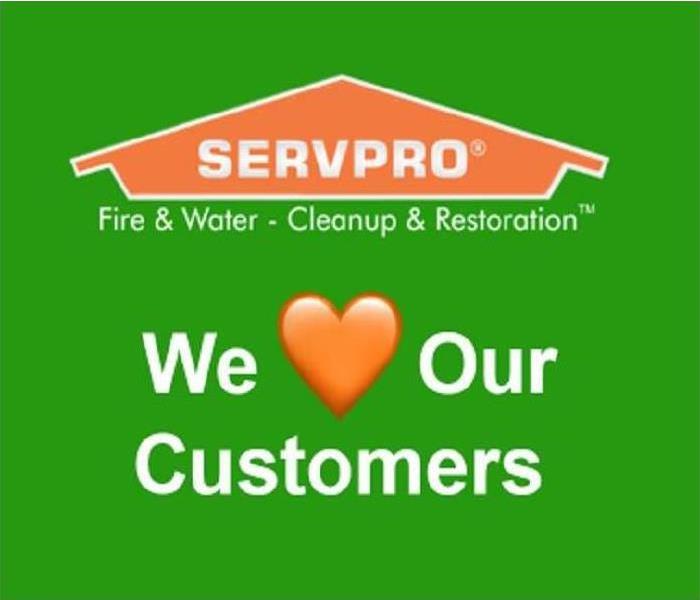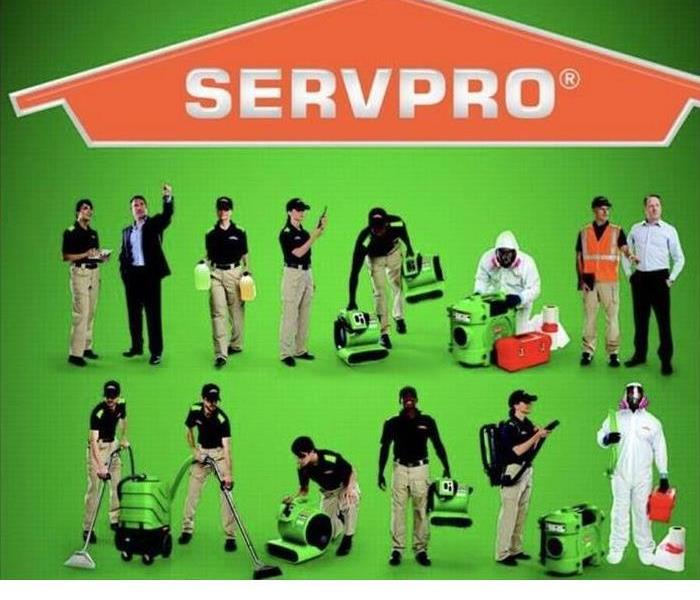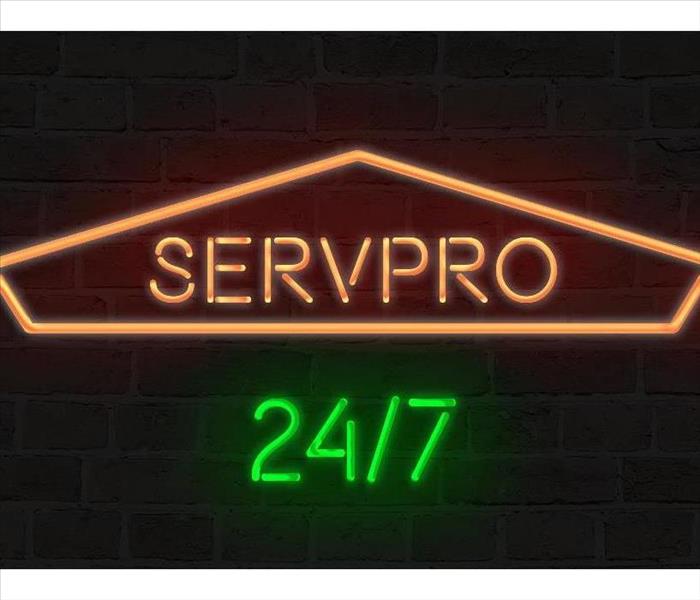Recent Why SERVPRO Posts
The Trouble with Home Mold Testing Kits
7/28/2022 (Permalink)
If you have seen signs or are concerned about mold in your home, you may be tempted to purchase a home mold testing kit. However, these kits have some caveats you should be aware of.
Techniques
There are many options for DIY mold testing out there, but most of them require precise methods to yield results that may not mean anything. Only if you know what you are looking for will a test kit be useful to you. These kits have many limitations:
- Some can only test a small, specific area at a time
- Some only indicate the presence of mold, not the type
- Others can only detect certain types of molds in certain types of areas
- Some require additional fees to send out for lab results
Results
Mold is everywhere. It is natural for mold spores to be floating through the air in your home and outside. There are hundreds of thousands of types of molds, some less desirable than others. How are you supposed to discern whether the mold found in your home is within expected levels or not? How are you supposed to know which type of mold you should watch out for? A mold kit will not be able to tell you that.
Alternatives
Unless you know what you are doing, it is recommended to hire professional mold testing services if you are concerned with mold in your home. They have better equipment, can test more areas of your house, and can interpret the results for you. Going this route will ensure that your mold testing will be accurate and timely. Mold is no joke, so it is best to treat it seriously.
Mold testing is best to be left in the hands of professionals, like SERVPRO. If you do purchase a home testing kit, be sure to do some research first.
Five Factors That Affect the Cost of Mold Removal
6/28/2022 (Permalink)
The cost of professional mold removal services for your home can become quite costly if not taken care of quickly and correctly. Here are five factors that will affect the overall price:
- Size of the Mold Problem
While you might be able to save money by tackling very small problems on your own, you will need the help of a mold remediation specialist for larger problems. Generally, the more widespread the problem is, the higher the cost
- Expense of Added Mold Testing
If you want a better idea of the levels of mold in your home and what species of mold is present, you can request a mold test at an added expense. A specialist should be able to address any type of mold growth that is found, including performing black mold removal.
- Location of the Mold
If the mold in your home is easy to access, such as on the surfaced of the wall or floor, you can expect to pay less for mold removal. However, if the mold is dwelling deep inside your walls or somewhere else that is hard to access, such as an attic or crawl space, the price will increase.
- Source of the Problem
What caused the mold to grow in the first place? If your mold problem was caused by a large underlying issue, such as a leaking roof or foundation issue, you will also need to consider the cost of addressing this issue.
- Cost of Required Restoration
If mold gets into the structure of your home, infects your carpet, or damages your belongings, the remediation specialist will complete the mold cleanup process and then fix any damage that has been caused. From replacing your carpet to completely rebuilding walls, these costs will certainly build up.
Dealing with mold removal can be costly, but it is a necessary process. As you prepare to call in a mold remediation specialist, estimate what you can expect to pay by considering these five factors.
Why Does Mold Grow on Food?
6/27/2022 (Permalink)
Food is one of the most common places that mold can be found. Most people have seen mold on bread or food stored in the refrigerator for too long. The most common types of bread mold include cladosporium, penicillium, and rhizopus stolonifera.
Spores Are Everywhere
Mold Spores are present in air, soil, and water. As a result, food items are likely to be exposed to spores throughout the food supply chain:
- Growing
- Processing
- Shipping
- Sale
- Storage
Exposure to spores usually does not immediately cause fungus growth. Spores only settle and multiply in a suitable environment.
Moisture and Nutriment
Practically every type of food is a dense source of nutriment. Moisture and a food source are the two requirements for mold growth. The starches in bread break down into sugars, which sustain bread mold. Limited air circulation during storage at room temperature or in a refrigerator is also favorable for fungi.
Delaying Mold Growth
It is all but impossible to prevent mold from growing on food eventually. Delay growth by taking the following food safety measures:
- Cover cooked food as soon as possible
- Promptly refrigerate food
- Make sure containers and surfaces are clean
- Maintain low humidity levels
Even if fridge mold starts growing on one item, containment and cleanliness can limit cross-contamination. Throw away food as soon as mold growth becomes apparent. Some preserved foods contain mold that is safe to eat.
Mold grows on food for the same reasons that people eat food. Bread and other items are sources of sustenance. Bread mold usually does not indicate a major problem. If homeowners smell a musty odor or see signs of mold growth on building materials or contents, they should schedule a consultation with mold remediation specialists.
Three Steps to a Fire Escape Plan
5/20/2022 (Permalink)
Have you ever considered what to do in case of a fire at your workplace? When it comes to escaping a fire, having an emergency escape plan is necessary. Coming up with a fire escape plan is relatively simple, and it can help everyone escape from a fire quickly.
Post Escape Routes
During a fire, there is a good chance that one or more escape routes will be blocked. Because of this, you should have multiple ways for people to escape in case of a fire. If you are above the ground floor, avoid using the elevator. You never know where the fire has spread to, and you don’t want to wind up on a floor that is engulfed in flames. In addition, it can be dangerous because:
- The elevator’s power supply could be cut off during your ride
- This means that you can get stuck between floors
- It may be impossible to escape until help arrives
Always stick to the stairs during a fire.
Have Drills
Having fire drills can help you practice for the real thing. This can help you work out potential issues in your fire escape plan and cut down the amount of time it takes you to evacuate the building. Aim to have one drill every couple of months. Regular drills can keep the escape plan fresh in everyone’s minds.
Consider People with Special Needs
Anyone in the building who has a special need may need an alternate plan or someone to help them evacuate. Figuring this out ahead of time can prevent confusion and can help ensure no one gets left behind.
Putting together a fire escape plan is on of the best ways to make sure everyone gets out safely in case of a fire. While the fire repair specialists can get your workplace back in good shape, you will be able to rest peacefully, knowing that you helped get all your fellow coworkers out to safety.
Five Ways to Keep Mold from Coming Back
5/5/2022 (Permalink)
Even after black mold and other fungus varieties have been fully remediated, the growth can return. This is because mold remediation does not eliminate all mold spores. They are invisible and can be found almost everywhere. Fortunately, a little preventative maintenance decreases the chances of a re-infestation. The following are five ways to keep mold from coming back.
- Keep humidity low
Ideally, indoor humidity should be below 50%. In particularly humid rooms like bathrooms and basements, you may need to run a dehumidifier.
- Run an air purifier
Air purifiers with HEPA filters trap mold spores. Fewer mold spores circulating around your homes means a lower chance of them landing somewhere they can grow. You can also install HEPA filters in your HVAC system or use a vacuum cleaner with a HEPA filter
- Use mold-resistant products
Toxic black mold is usually found in water damaged insulation, drywall, or other building materials. If your home is prone to mold growth, you may want to replace these materials with mold-resistant alternatives. Additionally, you can apply a mold-prevention product such as a mold-control spray or mold-resistant primer.
- Clean up spills and water damage immediately
In many areas of your home, all that is needed for mold to grow is a little moisture. Therefore, it is important to clean up water, everything from small spills to large appliance leaks, as quickly as possible to prevent growth.
- Check for mold frequently
Check mold-prone areas of your home frequently to spot any mildew before it becomes a large infestation. Mold cleanup is easier and more effective if the growth is caught early.
Even the most thorough homeowners can experience a mold re-infestation. If the problem is too large for you to handle alone, a certified restoration company can help you get your home back to normal quickly and safely.
What To Do About Hoarding
4/11/2022 (Permalink)
Where does all the stuff come from? And more importantly, how can we--as individuals and families--manage all the stuff?
Our SERVPRO Team Assists on Hoarders Clean Out
Our SERVPRO helps individuals and families when the stuff gets totally out of control. We assist on hoarders clean outs and estimates are free. Even now, with some many communications being electronic in nature, there is still a mountain of paper and things out in our Universe.
Some tools to help manage, or prevent, the buildup of stuff in our homes and worlds may be getting a home shredder and using it every single day in conjunction with the US mail delivery.
Also, remembering to send out boxes and magazines with bi-weekly recycle pickups can help diminish the pile up of paper. No recycle pick up? Magazines and periodicals can be donated to hair salons, etc.
Blocking out an hour of time a week, to go through things: clothes, shoes, knickknacks, papers, and other items, and being realistic about whether they are needed or used, and then unneeded items can be donated to charity, or perhaps friends or family may enjoy receiving the items.
Replacing a Faulty Toilet
6/9/2021 (Permalink)
Day-to-day life can be busy and hectic. When your home is your castle, the last thing you want is a leaking toilet to turn into more than just a leak. It does not take time for a simple drip to turn into extensive water damage that can lead to mold and other issues. While sometimes a simple repair can fix the problem, replacing an old toilet may be the best choice for peace of mind.
Is It Time to Replace My Toilet?
When small issues only occasionally arise, a toilet repair may be all that is needed. If more signs keep popping up, it is best to not ignore them. Signs for a replacement may include:
- Clogging is consistent or randomly happens when it should not
- Visible cracks in the bowl or tank
Repairs are needed frequently or more than one is needed - Toilet was installed prior to 2000
- Noticeable wobbling or loose fixtures
- Excessive mineral buildup
Be Prepared Before Replacing
Before starting the process, it is important to be prepared. When buying a new toilet, measurements are everything. The rough-in for your existing toilet needs to be verified before purchasing. While most pipes are 12 inches from the wall, some models are closer or farther. Once you have your new toilet, be sure to have the tools necessary for the replacement.
Replacement Steps
When you are finally ready for installation, the process includes the following steps:
- Remove old toilet and clean the flange
- Snugly position and affix closet bolts against the flange
- Install new wax ring on flange
- Position new toilet over the flange, aligned with closet bolts
- Use washer and nuts to secure the toilet
- Ensure replacement is level and stable before attaching supply line
- Check fill line is met and caulk if needed
Although a leaking toilet and replacement may be relatively easy fixes, some people do not have the time or know-how to tackle the project. Luckily, there are many trusted professionals that can help including SERVPRO of West Hills & North Washington County. Give us a call at 412-299-5520 for a free assessment!
Controlling Mold Growth in Your Home
6/1/2021 (Permalink)

While mold damage can occur relatively quickly, most structural harm will come from prolonged instances of moisture buildup. Therefore, to prevent and control the level of mold development in your home, it may be necessary to perform regular inspections as well as install and maintain proper preventative measures.
1. Controlling Humidity
Mold and mildew growth are tied directly to moisture. One of the most advantageous times of the year for this type of fungus is in the warmer summer months when humidity is high. Therefore, as an extra layer of protection, you may want to install dehumidifiers around your home, especially in your basement and possibly attic where moisture levels are typically highest.
2. Ventilating High Moisture Areas
Extensive mold damage can be prevented in areas like bathrooms, kitchens, and laundry rooms by using proper ventilation. You can install ceiling fans and even ductwork that vents to the outside to minimize the amount of remnant moisture in these areas.
3. Sealing Your Home
A lot of mold growth occurs around windows, doors, and even rooflines. You can inspect these areas, looking for signs of sealant wear and tear. If you come across areas of yellowing or cracked caulk lines, it is in your best interest to replace the caulk before dampness infiltrates your framing and home interior.
4. Inspecting and Resolving Home Repair Issues
While surface inspections are easy enough, it can be beneficial to have annual inspections of your home to ensure that there are no hidden problems. You can call a mold remediation specialist and have your home assessed for possible damage. Many of these companies will offer a free assessment of your property and even provide you with a preventative plan.
Mold damage can be a costly problem that seems to come from nowhere but being vigilant about moisture control can minimize those risks. Installing dehumidifiers and ventilation systems can eliminate most environmental moisture problems. Also, scheduling regular inspections can help pinpoint issues before significant repairs are needed.
Your Insurance Adjuster Is a Big Fan of Organization
5/18/2021 (Permalink)
Feel sorry for home adjusters, especially when they come in teams to handle a regional disaster. They work long hours. Claimants are neither happy nor prepared. The list of water damage claims goes on and on. When they finally do sleep, they dream that they will one day visit an insured who is organized and ready to go.
Learn Where You Stand and What You Need to Do
You may already know everything there is to know about how your policy covers your home for water damage, but that is not enough. You need to have a good understanding of the insurance claim process and your responsibilities in it. Here are a few questions you should ask your agent or company in your initial call:
- What is the deadline for filing claims?
- Can temporary repairs to secure the home proceed?
- When can permanent repairs begin?
- What do you need for documentation?
- Will your insurance pay for you to relocate temporarily?
Hopefully, your insurer does not expect you to let the water damage continue to grow while you wait for a home adjuster. If they allow you to begin before the adjuster shows up, make sure that you understand the rules.
Be That Insured That Adjusters Dream About
Your adjuster needs copies of everything you can collect. If you can provide these items in an organized fashion, your adjuster will be ecstatic:
- Bills
- Receipts
- Digital photos
- Inspection reports
- Written bids
Also, the adjuster must have the opportunity to examine big-ticket items destined for the dump, if possible. However, bear in mind that no adjuster wants to inspect a damaged freezer full of food three weeks after the event. Dispose of the contents.
The Home Adjuster Approved Your Claim, and You May Begin Permanent Repairs
When it comes to repairs, it is always best to choose a company that works well with insurance companies. You will find such a team of water damage restoration experts nearby and ready to begin.
How To Improve Claim Processing With Reliable Emergency Services
5/4/2021 (Permalink)
As an insurance agent or adjuster, you work to make sure clients are getting the compensation they deserve when disaster strikes their commercial property. Your claim services, however, depend on the efficient response of other entities. When you work with a reliable damage mitigation company, you can improve the speed at which you process your claims.
Reliable Scope
It pays to build a relationship with a company that specializes in various types of emergency response:
It is best to choose a company that not only cleans up the mess the disaster left behind but also restores your client's building to its former state. A company that includes both remediation and restoration in one fluid process will likely work well as a preferred vendor and help you streamline your claim services.
Reliable Response
Starting mitigation as soon as possible can help minimize the damage to your client's property, thus lowering the cost of repairing it. When you call the 24-hour helpline, local SERVPRO agents spring into action. Within a few hours, technicians can be on-site, assessing your client's property to determine what kind of mitigation is needed so that you can get the claim process started.
Reliable Service
With years of experience and skills training backing them up, the experts who take on your client's cleanup job can provide detailed reports of their progress. They remove unsalvageable materials, make sure the building is clean and dry to prevent secondary damage, and rebuild the affected area so that it is functional again. Many insurance companies choose SERVPRO as their preferred vendor because they know they can rely on the company's reputation for quality service.
You can improve your claim services by working with a trustworthy restoration company. You can depend on the reliable scope, response, and service with a certified remediation team.
5 Ways SERVPRO’s Claims Inventory System Can Help Your Business
4/29/2021 (Permalink)

When you make an insurance claim for your business after it suffers a disaster, your insurance agent may recommend working with a local SERVPRO for restoration. One of the reasons for choosing this service is the use of their electronic inventory system. There are several ways the use of this system can help the restoration process.
1. Keeping Lists
In many cases, a claim requires a list of damaged items for review. This database can store these lists and allow your restoration team to update them as they assess the damage.
2. Storing Photographs
Photographs of the damage may also be required for the restoration. This database can also store these so that they remain with the relevant damage list.
3. Remote Access
Another benefit of using this system to help with your insurance claim is the fact that it offers remote access. This allows you or your agent to stay up to date with the restoration without having to play phone tag or visit the job site.
4. Electronic Database
One of the benefits of an electronic database is that all the information can be stored in one place without having to compile tons of paper documents. It also reduces the risk that relevant paper documentation may be lost or damaged.
5. Progress Reports
Another aspect of the electronic database is that it can keep track of progress reports. This means that as aspects of the restoration are completed, the workers can update the progress file, allowing you to know what has been accomplished.
Working with SERVPRO’s electronic claims system can help with your insurance claim in several ways. This system can keep track of lists and photographs, as well as store progress reports. It also offers remote access allowing you to know what is going on from any location where you can lot in. In addition, the electronic database helps prevent the loss of paperwork.
3 Reasons to Choose SERVPRO
4/6/2021 (Permalink)
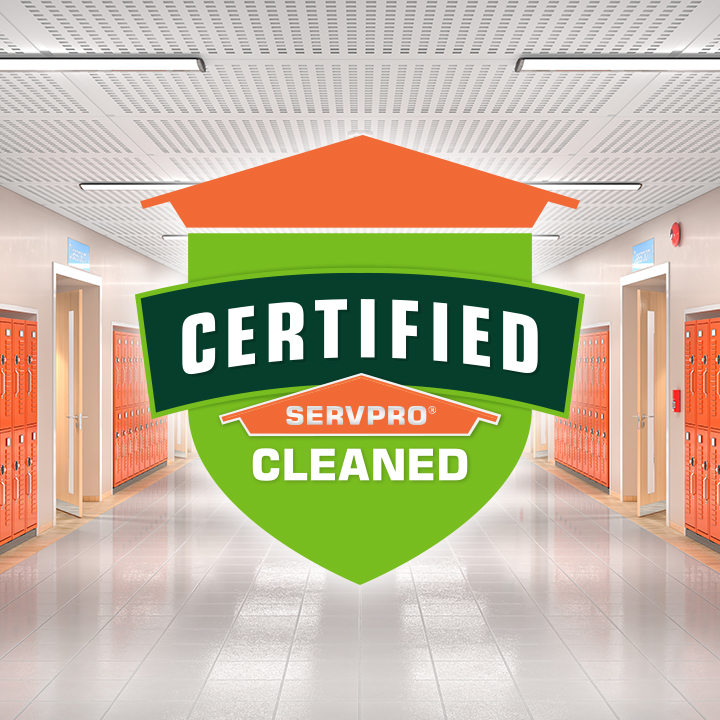
If you have a client with property needing restoration, then you may want to consider recommending a SERVPRO franchise in their local area. This professional restoration service may be able to provide the right team to take care of multiple restoration needs. Here are a few reasons you may want to consider them.
1. They Are Trained in Multiple Damage Types
The individuals at SERVPRO are all certified to perform a variety of restoration jobs. This allows them to assess and repair any damages they may find regardless of the source, whether it is water damage, fire damage, mold remediation, or storm damage. This means that on occasions real property has suffered more than one damage type, a single team of restoration professionals can still conduct repairs.
2. They Offer Excellent Service and Results
The SERVPRO franchise is locally owned and operated, meaning that you can often find a service in the vicinity of your clients. This allows for a quick response time. A restoration team can quickly be on the property and begin assessment and planning for the repair process. Their teams pride themselves on providing quality service in every aspect of the job.
3. They Can Help With More Than Building Repairs
These restoration professionals are in areas other than repair. They also offer document restoration, an electronic inventory management system to help insurance companies, item restoration, protective boarding and tarping services, and may even help with security measures for large commercial properties under repair.
If you're looking for a restoration team with excellent service, quality results, and great customer service, then you may want to choose the SERVPRO franchise. These restoration professionals are trained in multiple damage types including fire, flooding, storm damage, and even mold remediation. They even offer a variety of services outside repairs. The variety of services offered, and the ability to deal with multiple types of damage, allows you to recommend a single service to your clients for whatever disaster may have occurred to their property.
Back To School
9/7/2018 (Permalink)
Welcome to September! School is back in session, and there is a shift of patterns of behavior in the household. Safety awareness is always important. Now, the kids may be plugging in flat irons and forget to turn them off. Some may be back onto the morning coffee, and leave the coffee pot powered on all day when they leave the house. Additionally, you may want to consider pulling out the cell phone charger from the wall when you are not charging the cell phone. Did you ever happen to feel how hot it gets plugged into the wall when it is not charging a cell phone? Also, please check smoke detector batteries, and have at least one extra set of batteries in the home--ready to go, so there is no "down time" without batteries in the smoke detector. Please have a family plan for emergency exit, and consider a minimum of two exits. Have all persons in the household agree to a designated meeting spot outside the home in advance.
Mold
6/4/2018 (Permalink)
Mold is bigger than us. Our professionals use advanced water detection equipment to locate the source of the problem and remediate (remove/take away) any mold or water damage. It's important to note that mold--just like us--needs fed. Areas with moisture, darkness, and no ventilation are ideal to feed mold, and help it grow and thrive. Remember to find the food source for the mold. You don't want to remove the mold, only to have it return yet again due to a hidden leaking pipe, ground water seeping into the building, absence of a French drain or sump pump, leaking roof, or a cracked foundation--these examples come from a very long list of ways mold can be fed. The source of their food (the moisture) must be solved and removed in order to ensure that the mold will not return.





 24/7 Emergency Service
24/7 Emergency Service
